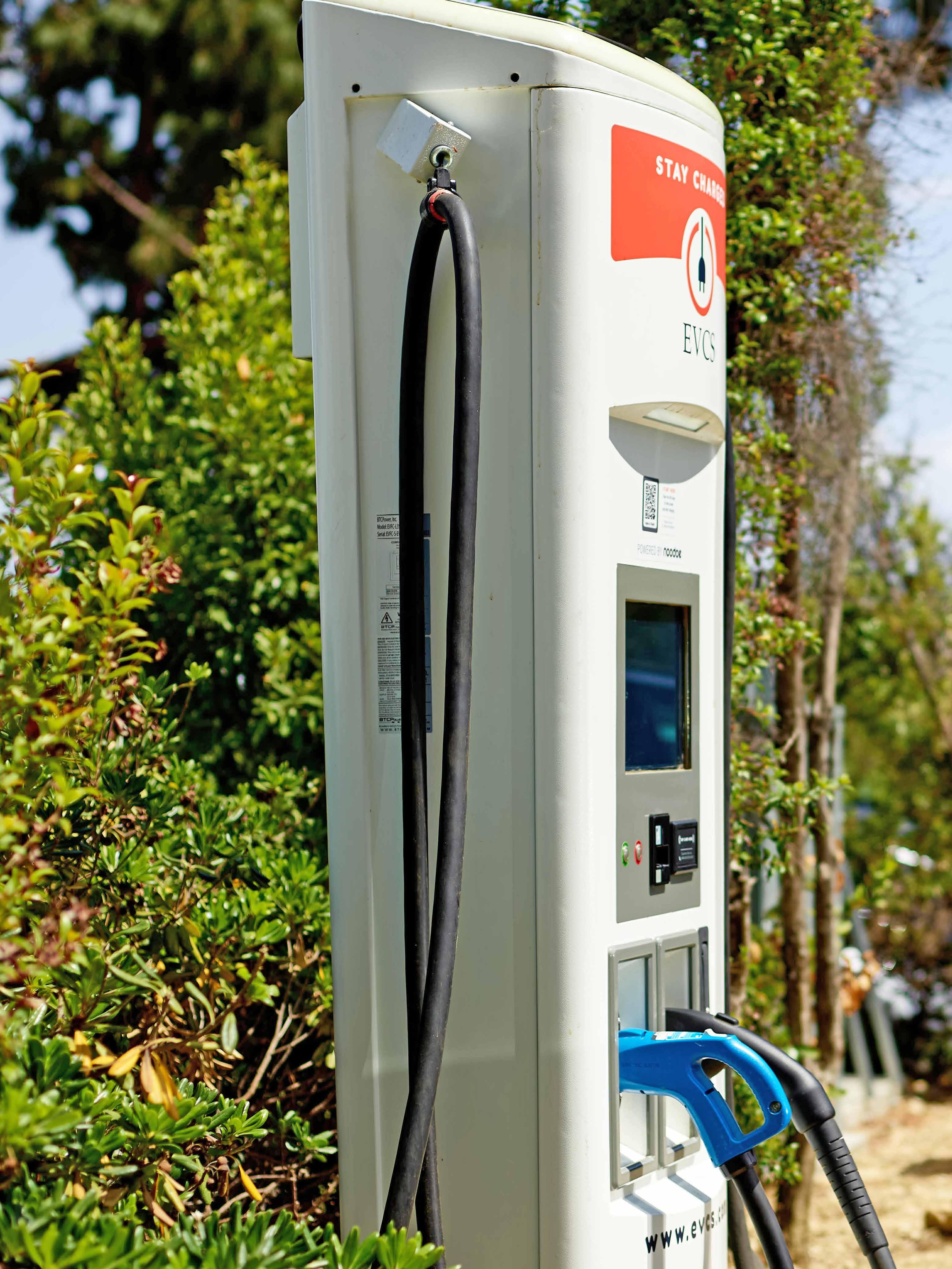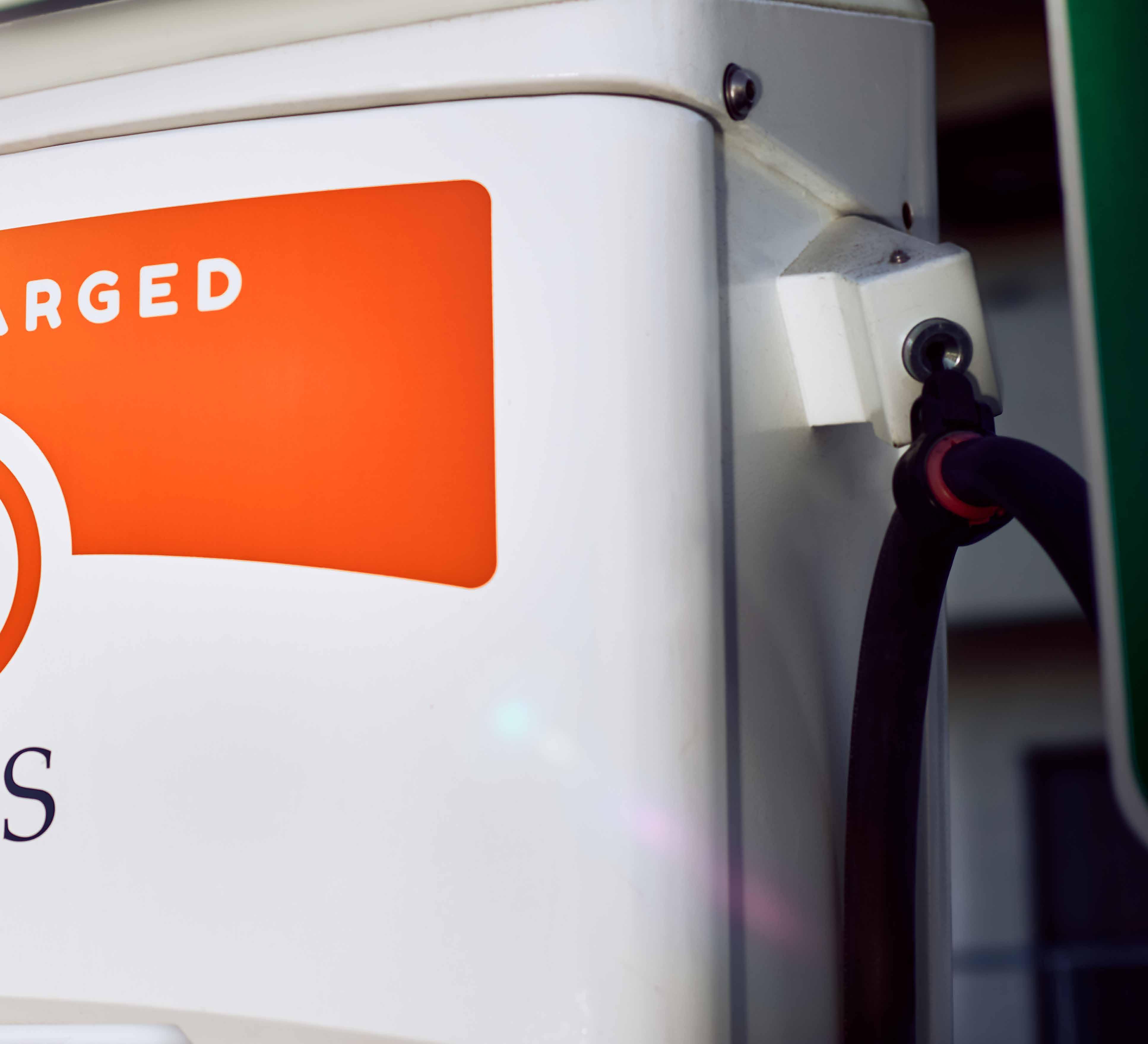
5 minute read
Gustavo Occhiuzzo
By Gustavo Occhiuzzo Co-founder and CEO, EVCS
EVCS’ Case for Renewable Energy Powered EV Charging Stations
Advertisement
Electric Vehicles, or EVs, have experienced a boom in popularity over recent years, with figures from Pew Research finding that the amount of EVs on the road in the United States has increased more than three-fold since 2016. The adoption of these vehicles is set to grow too, with a number of Federal and State initiatives pushing for the widespread adoption of EVs in an effort to combat climate change.

Although this push for adoption is set to greatly reduce the amount of emissions from traditional, fossilfuel powered vehicles, other factors must be taken into consideration to ensure that this shift doesn't result in trading out one negative consequence for another.
Thus, the energy-cost of producing EVs and lithium-ion batteries is one aspect that receives a significant amount of attention. The other, while somewhat recognized, is the energy that powers these cars, which is directly linked to the power sources that charging station providers utilize at each of their sites.
As it stands, and as verified by the most recent report from The California Energy Commission, the majority of power that runs through these charging stations still comes from non-renewable fuel sources.
Although there is a marked difference in the number of emissions an EV produces when compared to combustion-engine vehicles, to be truly conscious of the environment alternative methods of powering charging stations with majority, if not 100 percent renewable energy must be identified and implemented.
While many providers may still hold the notion that dirty energy is an unavoidable reality, at least for the time being, for the team at EVCS there is a workaround that enables providers to utilize 100% renewable energy at their sites. This means they're able to offer their customers a truly carbon-neutral way to charge their EVs, while also retaining fast-charging capabilities. Additionally, the workaround removes the requirement for installation of complicated and costly renewable energy generation systems, such as solar panels.
Carbon credits are a key aspect of the EVCS ALTHOUGH THE PUSH FOR EV ADOPTION IS SET TO GREATLY REDUCE THE AMOUNT OF EMISSIONS FROM TRADITIONAL, FOSSIL-FUEL POWERED VEHICLES, OTHER FACTORS MUST BE TAKEN INTO CONSIDERATION TO ENSURE THAT THIS SHIFT DOESN'T RESULT IN TRADING OUT ONE NEGATIVE CONSEQUENCE FOR ANOTHER.
renewable-powered system’s viability. Over the last two decades, carbon credits have become an important player in addressing emissions for big businesses. Companies like Google, Amazon, and IBM all purchase carbon credits to offset the massive emissions their operations release into the atmosphere every year.
As it stands, the global carbon industry was last valued at $272 billion in 2020, the value of which is only set to grow as the impacts of climate change become more apparent. But what do these credits have to do with EV charging and renewable energy?
It comes down to price. Costs associated with utilizing 100 percent renewable energy can be high, especially for businesses. This

makes sense when the standard energy mix is considered, with averages on the grid usually sitting at a 70:30 ratio, where 70 percent of energy comes from fossil fuels, and the remaining 30 percent comes from carbonneutral sources.
As such, sourcing energy solely from renewables comes with added costs. Although there’s not a lot that can be done about the price of sourcing this energy on the supplierside, costs can be heavily offset when carbon credits are brought into the picture. This is because, once a charging station provider is utilizing 100 percent renewable energy and receives accreditation from their governing body, they're able to generate carbon credits which can then be sold to offset the higher costs associated with purchasing renewable energy from a provider.

Through doing so, not only are these EV charging stations able to ensure their customers are using a truly carbonneutral method of transport, but are also able to accelerate the offset of original energy costs from the manufacture of their vehicles. According to an article in the Wall Street Journal, this takes 20,000 miles of driving to break-even with a traditional, combustion-engine vehicle. Additionally, the use of only renewable energy and the subsequent offsets from the generation of carbon credits means that EV charging station

providers can still provide energy at comparable - if not lower - prices than stations powered using the standard energy supply.
While the initial set-up of these systems is somewhat complicated and takes more administration than utilizing a standard power mix, the resulting environmental and financial benefits make it a viable option for all providers. Additionally, through implementing a cost-saving payment structure EV charging station businesses will likely be able to capture more customers by providing them unlimited guilt-free charging for their EVs at a low monthly cost.
To truly make an environmental impact both businesses and consumers need to ensure every link of the chain is considered. From production and operation to maintenance and charging, the EV industry can be a leader in showing the world how this is achievable through the smart utilization of renewable energy sources to generate carboncredits, while still offering EV drivers an affordable, carbon-neutral method of charging their vehicles.
Gustavo Occhiuzzo is the Co-founder and CEO of EVCS, one of the largest and fastest growing operators of electric vehicle fast charging stations on the West Coast.










